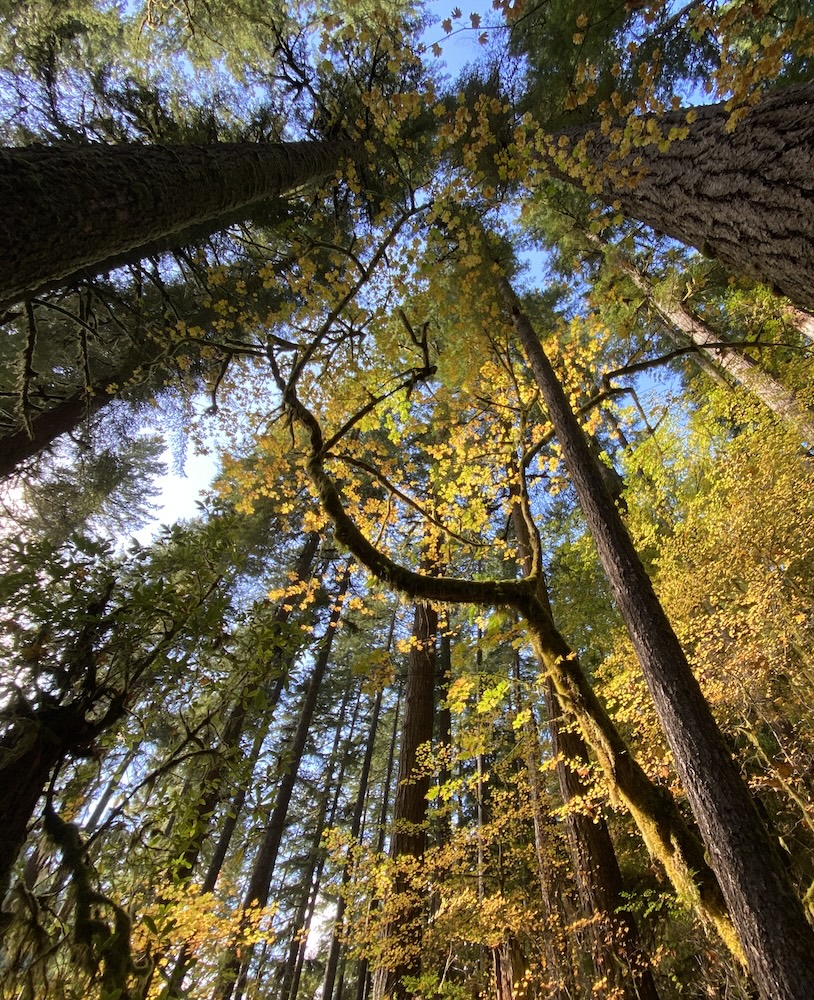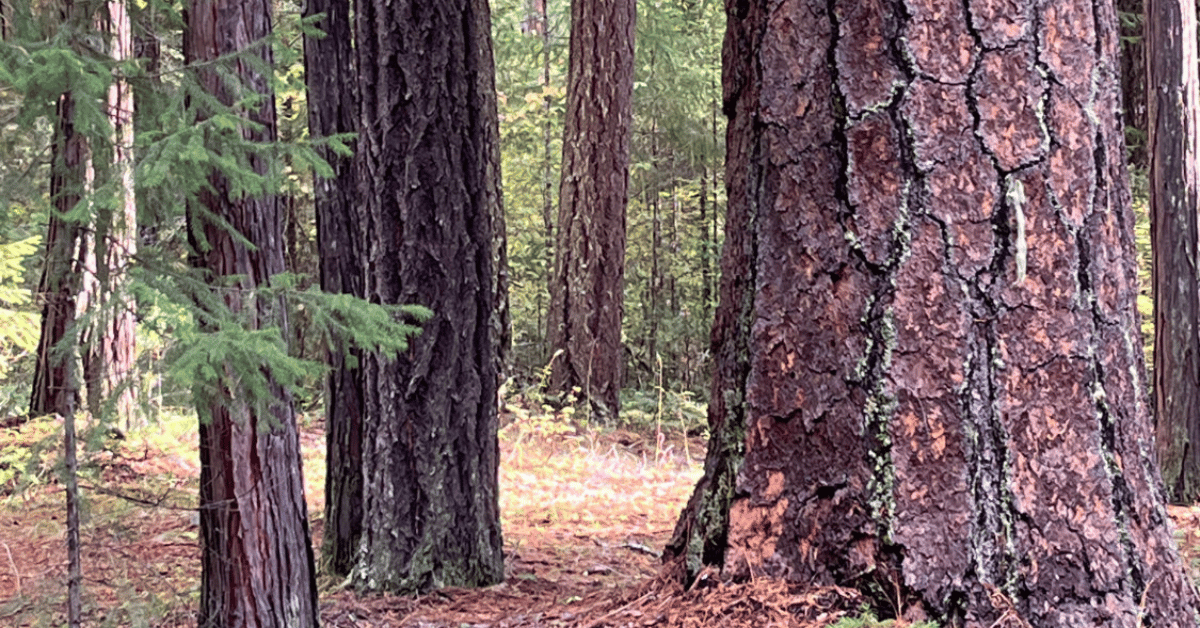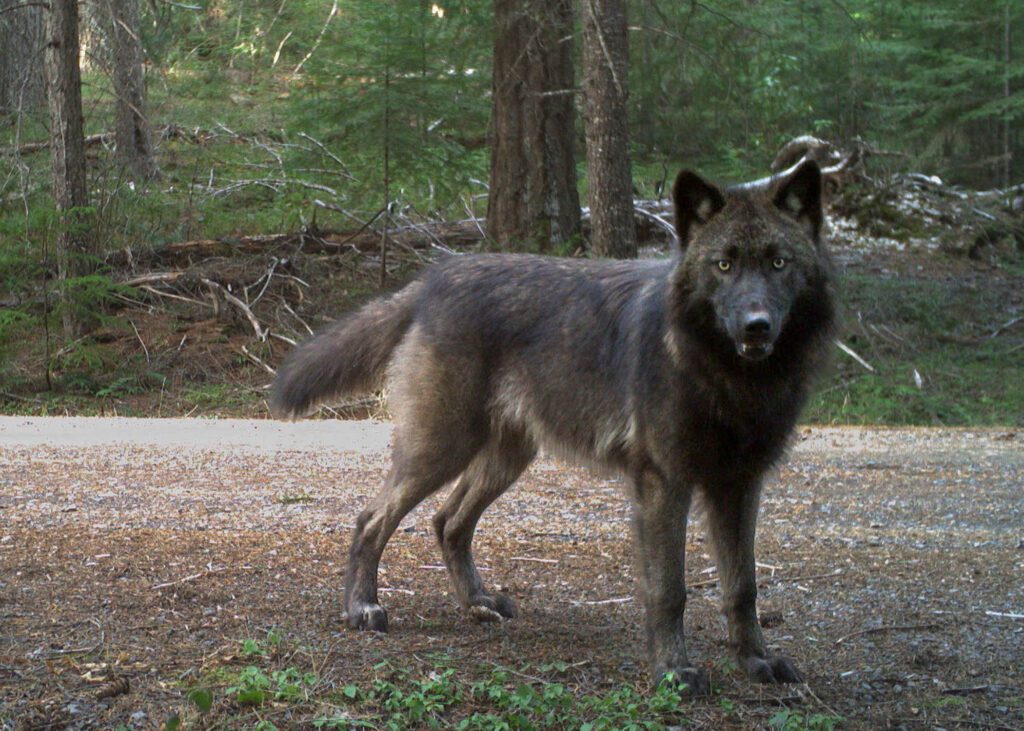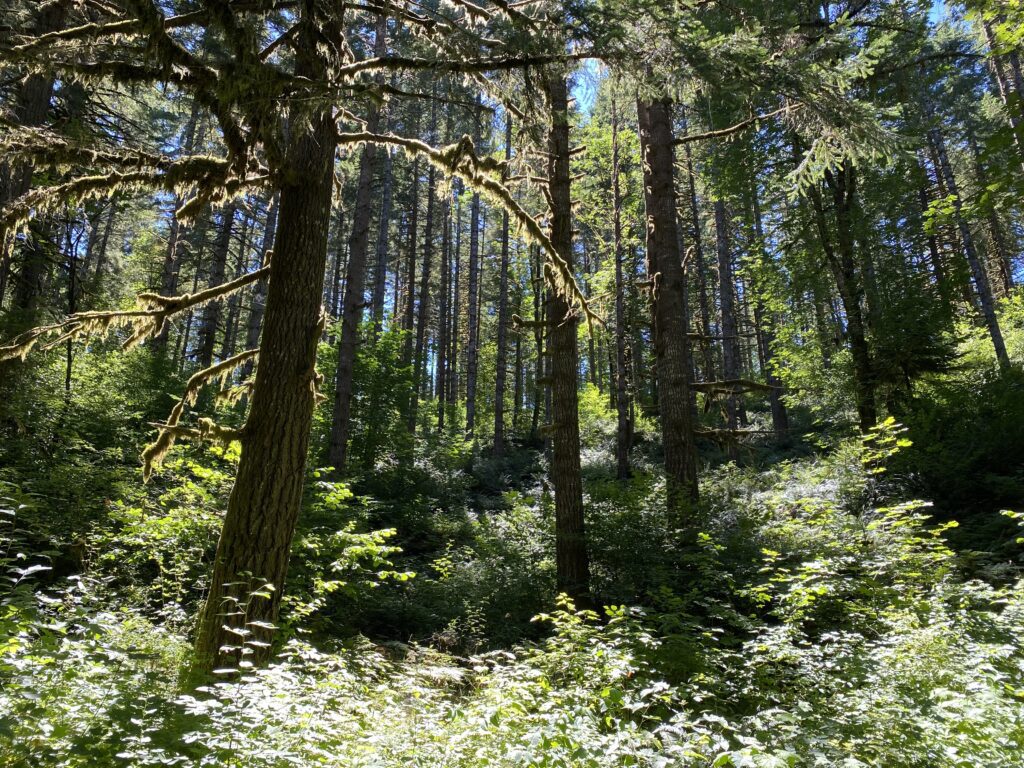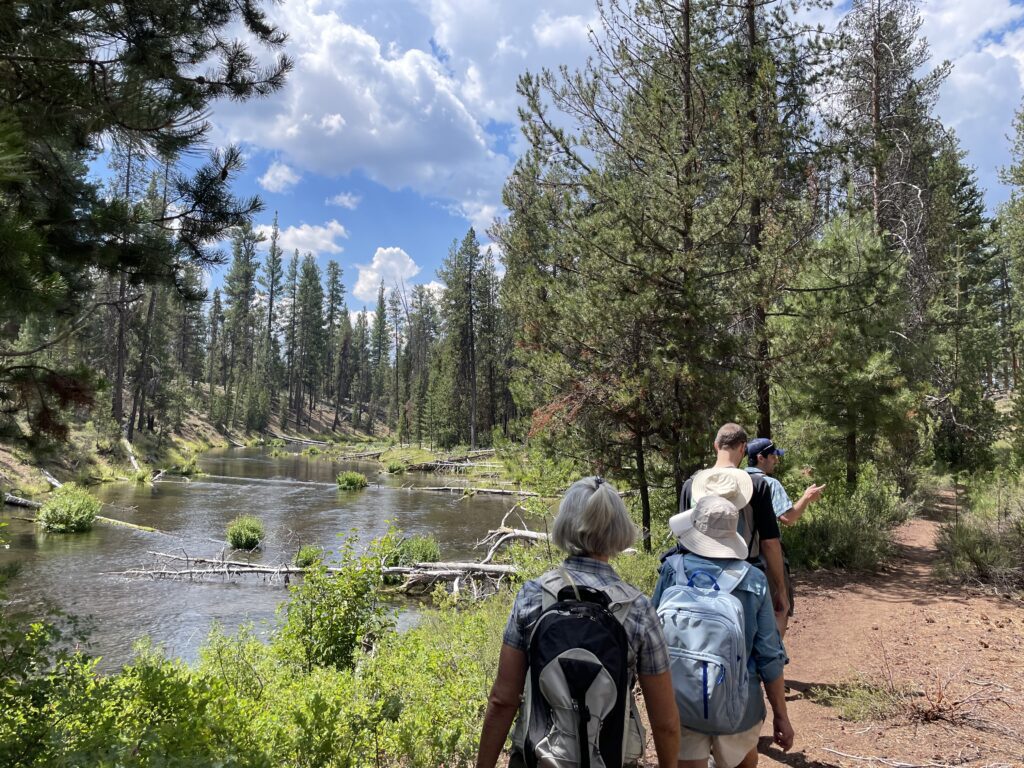The Timber Industry Wants to Cut Big Trees in Eastern Oregon. The Trump Administration is Happy to Help.
It’s hard to think beyond pandemics, childcare, and personal finances these days. The Trump administration’s lurching through a public health & economic crisis isn’t helping. However they seem to have laserlike focus on using the crisis to undermine environmental protections their industry friends would like to see go away.

At the national level, we see the suspension of Environmental Protection Agency (EPA) rules, bail outs for the fossil fuel industry, and opening up wildlife refuges to hunting.
More locally, we see the Forest Service (USFS) designating the destructive and already dangerous industry of logging along with mining and grazing on public lands as “mission critical” while protecting Americans by restricting our hiking opportunities.
Then there’s a whole bunch of seemingly little stuff. Some of it matters a whole awful lot. One example is the 21-inch rule. Also known as “the Screens”, the rule says that live trees 21” and larger in diameter can not be logged on USFS lands East of the Cascades. At the behest of the timber industry and their allies, Trump’s Forest Service is trying to weaken them.
The rule was put into place in an effort to end the “forest wars” of the 1990’s. At that time, aided by federal agencies, the timber industry was liquidating the last of Oregon’s old growth. As the public began to fight back, the conversation west of the Cascades was dominated by spotted owls. In central and eastern Oregon, it was largely about salmon – which depend on functioning forests to provide the clean cold water they need to thrive.
Interim plans were put in place to protect values under threat from business-as-usual logging and grazing. Those plans created a truce of sorts. In the long run, the USFS was tasked with creating more holistic and enduring plans ensuring protections for things like old growth, clean water, and wildlife habitat while allowing timber production to continue – albeit at a slower and more ecologically sustainable pace.
On the west side, that holistic plan took the form of the Northwest Forest Plan. However, before a similar plan was fully formed for the east side, politics changed leaving the Screens in place as the most (and arguably only) meaningful protection for what remained of Oregon’s large trees and old growth.
Fast Forward ~25 Years
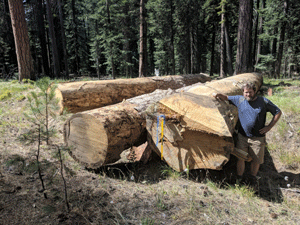
Forests in eastern Oregon are no longer being logged as heavily as they once were. However, logging big old trees in Eastern Oregon never completely went away. Local mills are still capable of milling trees much larger than 21 inches, and big old trees are coming off private lands at an unsustainable rate feeding hungry mills as far away as Asia.
Over the last few years, the pendulum is swinging back hard with large projects proposing high volumes of industrial logging under the guise of “thinning”, “restoration”, and “collaboration”. Further, fire suppression, overgrazing, and other forms of mismanagement remain the norm. Even with the Screens in place to protect them, old growth doesn’t come back in 25 years.
Industry and those who want to cut the last big trees, of course never liked the Screens – or any restriction on logging and grazing. They argue the Screens are arbitrary and temporary. It’s been 25 years. It’s time to throw them out. They find sympathy with the politicians they lavish with campaign contributions as well as old school USFS decision makers and even a few nominal “green groups”.
In addition to wanting to make eastern Oregon great again by logging big trees, those who tend to see forests as farms don’t like one species of tree in particular – grand fir. It takes a long time for more “desirable” trees like larch and ponderosa pine to grow to 21 inches. Not so for grand fir. They grow quickly and often die young.
In an age of fire suppression and reduced logging, there is probably more grand fir now than at many times in the past. This has resulted in a lot of logging-centric rhetoric about grand fir “encroaching” and “taking resources” from more “desirable trees”.
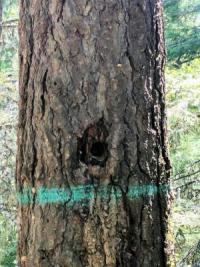
A woodpecker, hibernating black bear, or any of the dozens of species dependent on large structure in eastern Oregon forests likely have a very different view than an industry accountant on what is or isn’t desirable.
In the absence of abundant and functioning old growth forests, those young big trees serve a critical role on the landscape.
Notably, the Screens were not arbitrary. They were informed by the best available science.
The Screens don’t only protect old growth. They protect large structure, habitat for snag-dependent wildlife, appropriate hydrology, soil health, carbon sequestration and more. They also didn’t discriminate based on species or corporate profits, unlike timber sale planners.
And yes, the Screens were meant to be temporary. But they were meant to be a placeholder until there was a holistic plan in place like the Northwest Forest Plan. That never happened.
What would be arbitrary would be to assign an expiration date of 2020 to the Screens. It’s a little too convenient to get rid of the Screens just when the pendulum is swinging toward more logging and less oversight.
Miles and Inches
Rather than just comply with the rule, over the last 25 years, the USFS frequently attached “Plan Amendments” to individual projects. Those amendments allowed the Forest Service to ignore or change the Screens and other rules on a project by project basis.
Oregon Wild didn’t always oppose them. There are rare instances where we believe it may be appropriate to cut trees over 21 inches. For example, it might be ok to cut a young 25” grand fir growing under a 300 year old ponderosa pine that would serve as ladder fuel in the event of a fire and is only there because of human interference – like suppression of natural fire.
The Nature of Big Trees
– Doug Heiken, Oregon Wild
By whatever name it’s called – and there are some colorful nicknames – grand fir is a native species. It is doing exactly what it evolved to do given the current fire regime and provides many important values beyond their dollar value as saw logs.
Clearing around every large legacy tree causes other problems. For instance, aggressively thinned forests have an unnatural shortage of clumps which are common in old growth forests. Large grand fir also help mitigate for the shortage of large green pine trees and snags.
Protecting large trees doesn’t really interfere with forest management. Agencies can make great progress on their purported restoration goals (such as reducing densities, changing species composition, and reducing ladder fuels) by focusing on thinning smaller trees.
However, as so often happens when conservationists give an inch, the Forest Service took a mile. Plan Amendments became the proverbial rule rather than the exception.
Ultimately, a judge told the Forest Service that continually exempting projects from the 21” rule was unlawful and they had to stop. Those who want to cut big and old trees were not happy. Under pressure from industry and industry allies, Trump’s USFS has begun a process to reassess (pronounced weak·en) the 21” Screens – the most meaningful protection for old growth and big trees in Eastern Oregon.
Dismantling the Life Raft at Sea
Because of the Screens, our forests provide higher quality habitat, store more carbon, and have more large structure. However, there remains a major deficit of that large structure in eastside forests. Living or dead, this structure provides critical ecological values – especially for wildlife. By definition, it takes more than 25 years for old growth to return. In the meantime, large young trees – including grand fir – are often filling the niche.
Rather than create a plan that maintains and creates more large structure in a comprehensive way, [it seems to us] the USFS is just planning [almost certain to] simply to weaken the rules and find a way to start cutting big trees again.
Essentially we’re sitting in a lifeboat in the middle of the ocean. And rather than create a plan to row in the same direction to get to shore, we’re focused on how to dismantle the lifeboat because “at least we can all agree it was meant to be temporary”.
There are some wonderful folks who work at the USFS. Even so, under the Trump administration, and the pressure being brought to bear by local politicians and industry apologists, it seems naive to think the Forest Service will produce an unbiased scientific review or a carefully-crafted, ecologically-appropriate adjustment to the Screens.
…Especially after they’ve spent the last two decades trying to work around them.
As it is, the Trump administration has essentially redefined the word “restoration”. The only measures of that benign term have become the number of acres logged and the volume of raw material sent to mills.
The Forest Service has been using loopholes to propose ever bigger and more destructive projects in sensitive landscapes while sidestepping robust environmental analysis and meaningful public input. We’ve seen the result of that in controversial projects like industrial logging proposals along the Wild & Scenic Lostine River.
Moving Forward
We’re thankful some leaders like Rep. Peter DeFazio and Oregon’s Senators Ron Wyden and Jeff Merkley have called on agencies to slow down during the COVID-19 pandemic. However we’ve yet to see them take note.
It’s been 25 years and the Screens are doing their job. There’s no rush to solve a problem that arguably doesn’t even exist: there are a multitude of unimplemented projects that have been planned; the bottom has fallen out of the timber market, log yards are nearing capacity, and we don’t have an overabundance of big or old trees.
If the Forest Service wants to get past the “temporary” Screens that have been working for 25 years, they need to take their time and develop a holistic plan that is in line with the best available science and modern values. The process must allow for meaningful public input from all stakeholders. In short they have to be replaced with something better.
It’s up to leaders like Oregon’s Senators Wyden and Merkley to make sure that happens. Or just tell the USFS to focus on legitimate restoration and real problems like overgrazing, the fire deficit, a deteriorating and outdated road system, and a lack of funding for non-extractive programs.
And it’s up to forest defenders and true conservationists to defend the 21-inch Screens.
This blog only speaks for Oregon Wild. However, we want to publicly share our appreciation for our partners at Greater Hells Canyon Council who helped with this piece and remain tireless defenders of old growth protections and public lands in Northeastern Oregon.
We also want to thank the many organizations standing with us. In particular Blue Mountains Biodiversity Project, Central Oregon LandWatch, CRAG Law Center, Greater Hells Canyon Council, and the Juniper Chapter of the Sierra Club. These groups all deserve your support!
